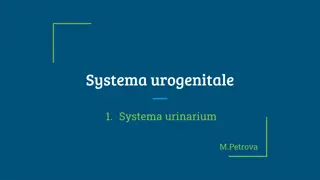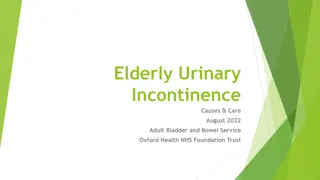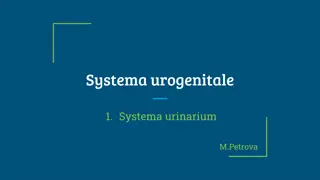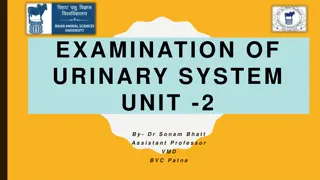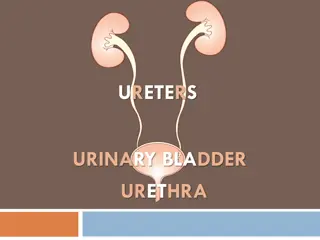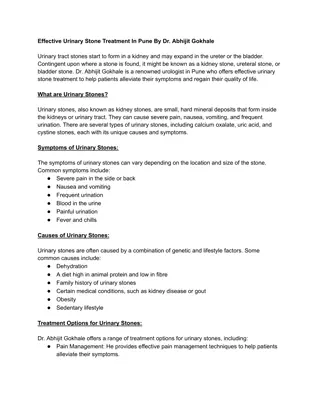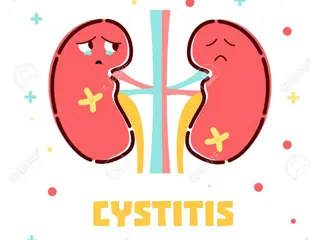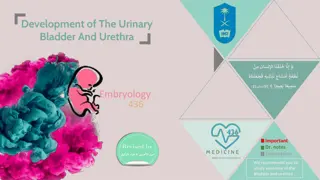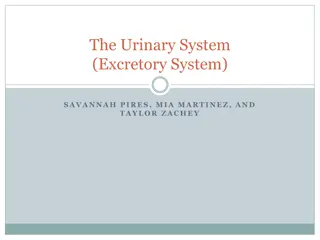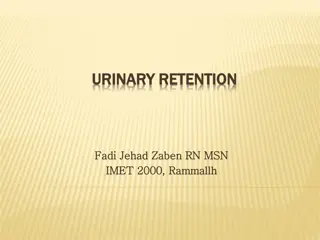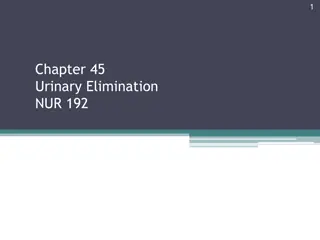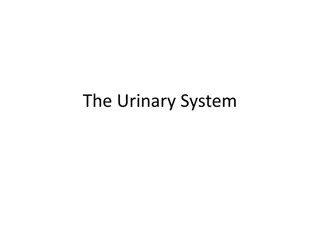Understanding Urinary Retention: Causes, Symptoms, and Management
Urinary retention can be acute or chronic, resulting in the painful inability to void or fully empty the bladder. In men, common causes include benign prostatic enlargement and post-surgery complications, while women may experience it due to pelvic prolapse or neurological issues. Initial management involves a thorough history, examination, and consideration of potential underlying conditions. Prompt diagnosis and treatment are crucial to prevent complications.
Download Presentation

Please find below an Image/Link to download the presentation.
The content on the website is provided AS IS for your information and personal use only. It may not be sold, licensed, or shared on other websites without obtaining consent from the author. Download presentation by click this link. If you encounter any issues during the download, it is possible that the publisher has removed the file from their server.
E N D
Presentation Transcript
Acute urinary retention This is described as the painful inability to void with relief of the pain following drainage of a large volume of urine from the bladder. The volume is normally between 500-800ml. Larger volumes suggest an acute on chronic retention picture. Acute retention can be spontaneous or precipitated.
Chronic urinary retention Chronic urinary retention is the inability to completely empty the bladder whilst maintaining the ability to urinate, with residual volumes of >300ml. Patients do not suffer from pain, but may have associated symptoms including feeling of incomplete emptying, poor or interrupted stream, and urinary frequency and urgency.
High pressure chronic urinary retention High pressure chronic urinary retention is similar to chronic urinary retention. However, it is associated with a tense bladder and renal impairment due to hydronephrosis (dilatation of the kidney). Patients may have similar chronic urinary retention symptoms, including night-time incontinence. Urgent drainage of the bladder is required.
Common cause of urinary retention in men Urological Benign prostatic enlargement Prostate malignancy Urethral stricture Haematuria Prostatic abscess Non urological Recent surgery (anaesthetic/mobility related) Constipation Drugs antidepressants, nasal decongestants, anaesthetic
Common cause of urinary retention in women Pelvic prolapse Post surgery Pelvic masses Constipation Neurological Drugs - antidepressants, nasal decongestants, anaesthetic
Initial management History HPC How long since last voided Pain Infective symptoms Haematuria Any associated neurological symptoms PMH Recent or previous surgery on lower urinary tract or abdomen Previous lower urinary tract symptoms DH Any recent medication changes Drugs for benign prostatic enlargement Any anticoagulants
Initial management Examination Observation and general inspection Examine abdomen for palpable bladder or other abdominal masses Examine external genitalia for potential causes of obstruction eg phimosis Rectal examination in men to examine size and nature of prostate Vaginal examination in women to examine for possible pelvic masses
Catheterisation Pain relief Oral analgesia Local anaesthetic lubrication (e.g. Instillagel) Technique Obtain equipment needed for catheterisation Sterile catheterisation pack Cleaning fluid Syringe and sterile water for non-prefilled catheters Lubricating jelly Catheter Catheter bag/Drainage system
Catheterisation Technique continued: Wash and dry hands, put on sterile gloves. Place sterile towels to cover patient genitals. In a man, clean the glans penis, and in a woman, urethral meatus and surrounding tissues. Inject lubricating or anaesthetic jelly down urethra, leaving for 5 minutes. Gently insert the catheter through the urethra and into the bladder. Wait until urine flows before inflating the balloon to suggested capacity (see catheter label). Withdraw catheter so that balloon sits at the bladder neck. Connect drainage bag
Post catheterisation Measure residual volume drained Check U&Es Give patient completed catheter passport Consider reversible causes eg constipation Consider starting an alpha blocker if the possible cause if benign prostatic enlargement Consider whether a trial without catheter is suitable and could this be done in community? Communicate with patient the next step in the management plan and document in catheter passport Refer for TWOC if appropriate using the fo+
Urinary retention pathways Male urinary retention pathway at NBT link Female urinary retention pathway at NBT link
Referral forms for NBT TWOC Click links below to BUI Website for Male and Female referral forms Male TWOC referral form Female TWOC referral form


